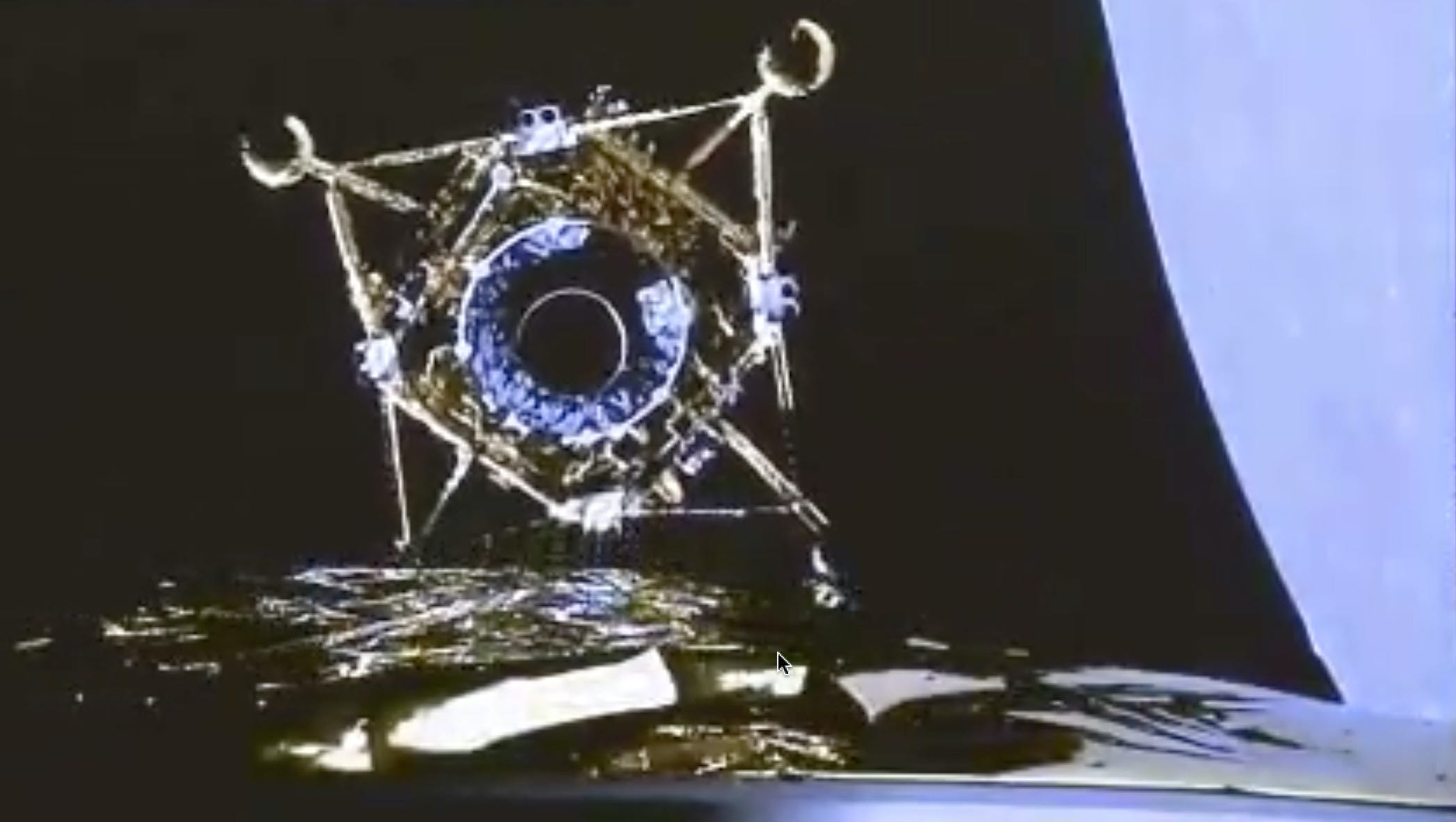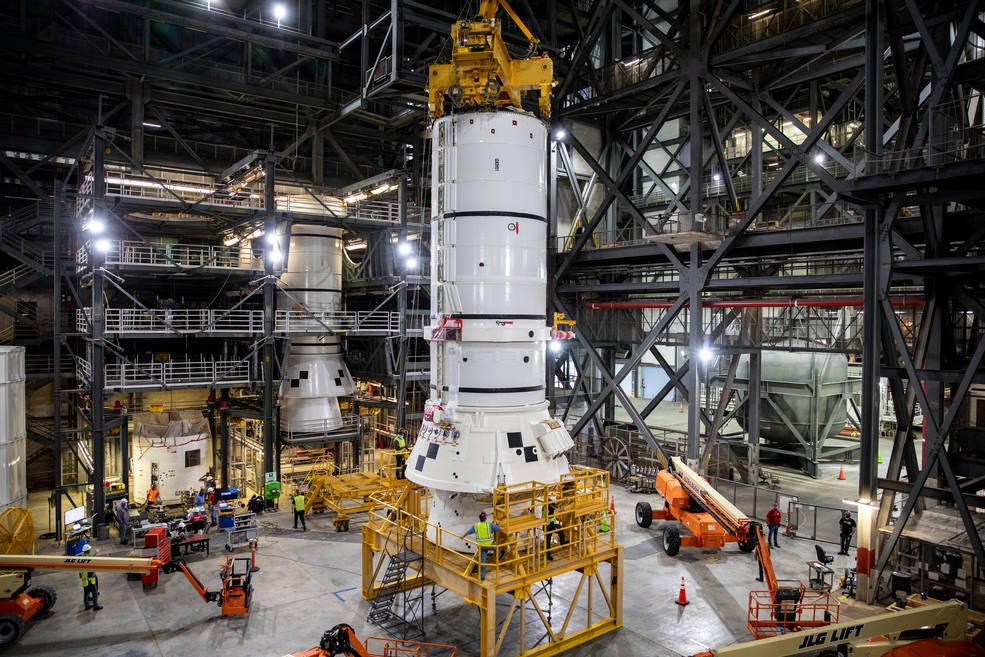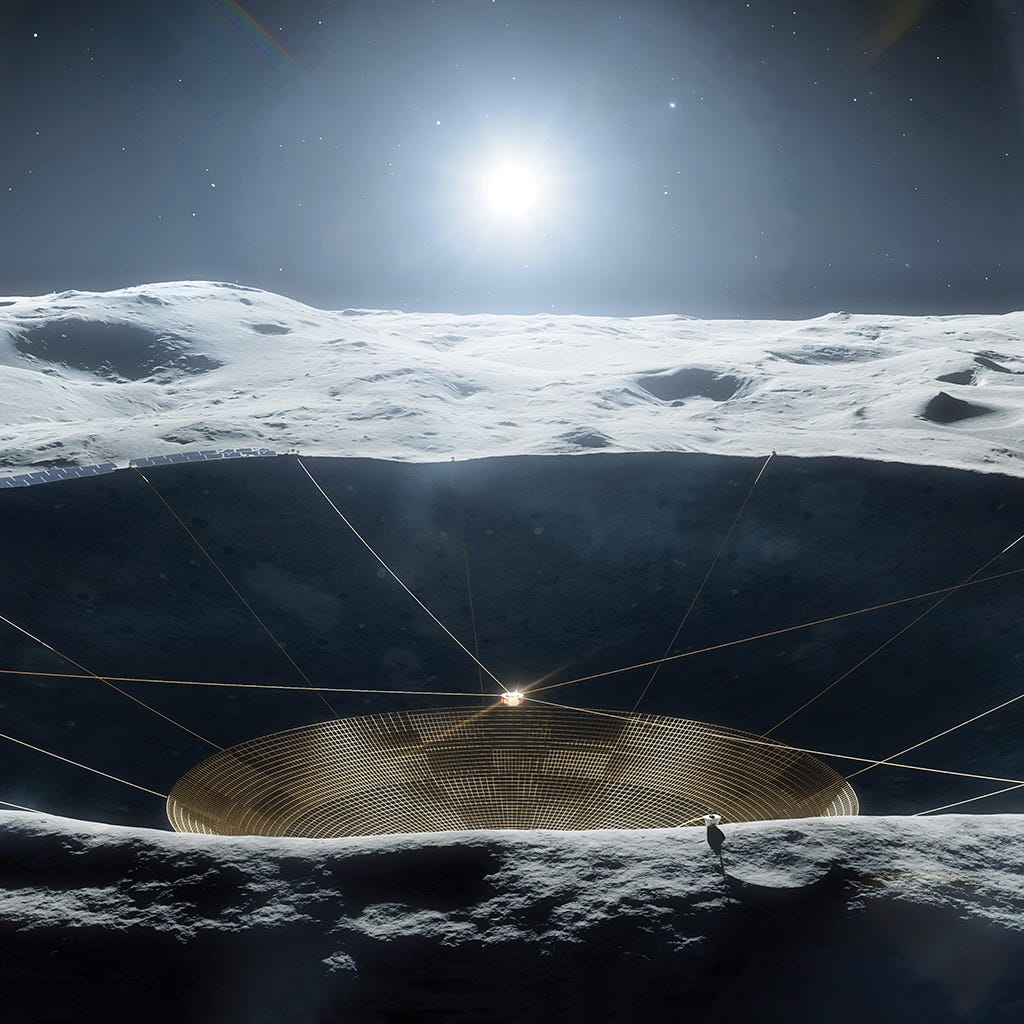Moon Monday Issue #3
Chang’e 5 enters lunar orbit, SLS assembly begins, planning the future of astronomy from the Moon, and more developments in the lunar space.
Highlight
China successfully launched the Chang’e 5 spacecraft last Monday, November 23 (UTC), to robotically bring samples from the Moon. It entered lunar orbit on Saturday and circularized its orbit on Sunday to target the landing with fuel efficiency. Today, the surface element separated from the orbiter and will next move into a 15 x 200 kilometers orbit before attempting a landing tomorrow. More about the mission in the previous issue of Moon Monday.

Exploration

NASA has begun assembling the SLS rocket for launching the Artemis I mission to the Moon by November 2021. The engineers are starting with the rocket’s two boosters which should be fully stacked up by early next year. Here’s a chart of the process. NASA has invited the media to capture images of the booster segments as they’re being assembled.
As part of ESA’s Space Resources Strategy initiative, British metallurgy company Metalysis is optimizing the process that will be used to extract oxygen from lunar soil. The oxygen can be used for air and fuel needs while the leftover metal powders could be used as construction materials for Moon habitats.
On November 22, NASA successfully tested a low-cost sampling technology called PlanetVac which is set to go to the Moon in 2023 and on Japan’s MMX mission to collect samples from Mars’ moon Phobos in 2024. The test was done in USA’s Mojave desert on a Masten-built Xodiac vertical takeoff and vertical landing system, which functions much like a lunar lander. The PlanetVac system mounted on one of Xodiac’s legs collected 100 grams of material, including a few millimeter sized rocks, and successfully transported it to the top of the rocket 3 meters above.
After successfully launching the Hope spacecraft towards Mars, UAE now aims to send a rover to the Moon by 2024. The rover will be onboard a lander built by another country that UAE will partner with, just as it made a deal with Japan to launch their Mars orbiter.
Science

The Royal Society has published a special issue on the future of astronomy from the Moon. The papers explore how deploying telescopes of various kinds, from radio to infrared and optical, can improve our understanding of the Universe’s origins at a level beyond the reach of any planned telescopes on Earth or in orbit. Papers below.
(Note: The “Open access” links work for some papers, and for others it will take you to a site where you can request a legal copy)
- Astronomy from the Moon: The next decades (Official) (Open access)
- Transformative science from the lunar farside: Observations of the dark ages and exoplanetary systems at low radio frequencies (Official) (Open access)
- Discovering the sky at the longest wavelengths with a lunar orbit array (Official) (Open access)
- The limits of cosmology: Role of the Moon (Official) (Open access)
- Reaching small scales with low-frequency imaging: Applications to the Dark Ages (Official) (Open access)
- Low-frequency technology for a lunar interferometer (Official) (Open access)
- Is the Moon the future of infrared astronomy? (Official) (Open access)
- Lunar optical interferometry and hypertelescope for direct imaging at high resolution (Official) (Open access)
- OWL-Moon in 2050 and beyond (Official) (Open access)
- Pantheon habitat made from regolith, with a focusing solar reflector (Official) (Open access)
- A 20 meter wide-field diffraction-limited telescope (Official) (Open access)
- The lunar surface as a recorder of astrophysical processes (Official) (Open access)
- German Aerospace Center's advanced robotic technology for future lunar scientific missions (Official) (Open access)
- Human habitats: Prospects for infrastructure supporting astronomy from the Moon (Official) (Open access)
- LOUPE: Observing Earth from the Moon to prepare for detecting life on Earth-like exoplanets (Official) (Open access)
- Concentrated lunar resources: Imminent implications for governance and justice (Official) (Open access)
As we speak, China’s Chang’e 4 lander and the Queqiao orbiter that relays Chang’e 4’s communications are both equipped with three five-meter radio antennae to observe the Universe at low frequencies, and are demonstrating the potential for radio astronomy from the Moon.
Using data from the M3 instrument on Chandrayaan 1 and Diviner on LRO, APL scientists have found promising signs that the Mons Wolff region in the Moon’s Imbrium basin hosts substantial swaths of mantle material, a first such discovery (paper). The team will analyze neutron and gamma ray data next to verify their findings. If confirmed, they intend to propose a sample return mission to the site as that could provide unprecedented insights on the Moon’s formation, which is used as the basis for understanding planetary formation itself.
China plans to build a prototype of their lunar scientific research station, consisting of multiple instruments in lunar orbit and on the surface. The surface station will also be capable of utilizing lunar resources, a step forward to a lunar human base. This plan is part of the Phase 4 of the Chinese lunar exploration program that begins with the Chang’e 7 mission to the Moon’s south pole.
The Canadian Space Agency has awarded six contracts worth US $2.2 million to Canadian companies and organizations for the development of potential lunar science instruments under its LEAP program to explore the Moon.
More Moon
NASA’s Casey Honniball who led the SOFIA observations that detected water in sunlit regions on the Moon appeared as a guest on The Planetary Society’s podcast to talk about the discovery and her role in it. Her section of the podcast starts at the 15:55 mark.
Sample return is exciting but getting access to Moon rocks is difficult for average joes like me. This is where Project virtualmicroscope.org comes in. The website’s Apollo section has more than 500 Apollo samples available to see with a virtual microscope!
→ Browse the Blog | About | Donate ♡
